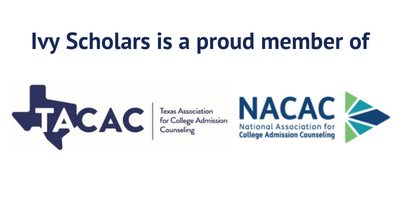All schools have age cutoffs; this makes sense at some level. You want all of the kids in a grade to be more or less the same age, and to have more or less the same level of maturity. That said, where the cutoff lands is still somewhat arbitrary; a line was drawn in the sand, and what side of it you fall on determines a lot for you.
In Texas, this cutoff is the August/September line. This means that a child must be 5 by September 1 to enroll in kindergarten, and this then propagates upward through the school years. This has impacts on students’ experiences both large and small; we’ll examine some of them in this article to see how it affects you. Let’s get started!
The Youngest and the Oldest
The students most impacted by this are those right on the line, those born in August and September. If you’re born in March or February, there’s no question what grade you’ll be in; you’ll be average in terms of age for your year, which is a comfortable place to be generally.
Students born in September will just miss the cutoff, and will therefore be among the oldest students in their grade in following years. There is a possibility to enroll students in kindergarten before their fifth birthday, but it is not often used because it is quite difficult.
Students born in August, meanwhile, will often be the youngest students in their class. While the impact of this will lessen over time, it matters most for the youngest students. A year of difference matters a lot more when you’re five than when you’re fifteen (though it is still impactful at fifteen).
An example of this phenomenon can be found in sports. The linked article discusses why August birthdays are so common for pro baseball players; and it turns out to be for the same reason (though with a different date cutoff). Players with August birthdays in baseball are generally the oldest and most developed on their teams, which leads to early success and increased coaching and interest, which snowballs from there.
Of course, academics are not the same as sports, but especially early in school this impact can be seen and felt. A year of development is a long time, and the youngest students often lag behind their peers. Note that this is in aggregate; and does not apply in every case. Young students can and do thrive in schools; it’s just that on the whole, students who are older and more developed have a leg up when starting school.
Of course, this lessens significantly as students advance through school, but the aftereffects linger, and there are other impacts of your birthday and grade. We’ll go through how these can impact you in high school through the rest of this article.
Age and Tracking
Most schools separate students into tracks; at the most basic level students are sorted into on-level, above level, or below level for their current grade. In many schools this begins early; some schools begin tracking as early as third grade; almost all have a separate honors track in middle school.
This is most pronounced in high school, where students in the advanced track may never interact with peers outside it, and vice versa. This creates very different school experiences depending on what track you are on, as resources and talent concentrate on the higher track.
Once a student is in a specific track, it can be difficult to change. In many schools, students continue on the track they are in unless they fail down into a lower one. It is only possible to enter a higher track in specific circumstances. These vary; the best time is at the start of high school. Generally, you have to take a special exam at the end of middle school to qualify for the advanced track in high school, and be recommended by your teachers.
How does this relate to age? Students who are slightly older and more developed in elementary school are more likely to end up in the advanced track there. These subtle differences ripple forward through their educational career, leaving them more likely to be in the advanced track in high school.
This is not a given, but something you need to be aware of. Parental advocacy is usually the best way to get a bright student who has been overlooked onto the advanced track, and that may be necessary for students who are young in their grade, and who may have been overlooked otherwise.
Qualifying for Summer Programs
Summer programs are a wonderful thing for high school students, providing an amazing number of opportunities. We’ve written about these before (a fair bit actually), and one common trend is that almost all summer programs have fairly strict age and grade restrictions.
This is for good reason; there are liability issues that come from working with children, especially when you assume responsibility for them as in a residential summer program. Therefore the most advanced (and in many cases the most prestigious) summer programs have the strictest age requirements.
We do sympathize; letting 14 year olds into a working laboratory does not sound like an ideal situation. However, for students born in August especially, this can be a significant factor when finding summer programs to attend. These programs generally require students be above the minimum age by the start date of the program; generally sometime in June. If your birthday is in August, then you may just miss the age cutoff while still qualifying by grade level.
The most important time for summer programs is right after your junior year; this is the summer before you apply to colleges, and is one of your best chances to show off what you’ve learned. There are plenty of great options that will work for students who aren’t yet 16, but they must be sought out intentionally, and other options excluded from the search. You can still find great opportunities; you just may need to work a bit harder to do so.
Social Factors
Of course our main concerns are academic, but high school is about more than just classes. Age plays something of a factor socially, though generally all of the ages are close enough not to make much of a difference. There is one major exception though: driving.
Getting your license, and driving yourself to school instead of taking the bus or getting a ride is a right of passage for many students. This is of course much more true in the suburbs and rural areas than the city, but the freedom and flexibility offered by a driver’s license is immense.
Students at the young end of their grade will get to do this too, of course, but will need to wait longer than their peers. This seems like only a few short months from the adult vantage point, but that can be an eternity for a teenager.
There isn’t any fix for this problem, no way around it or to avoid it. It is merely something to be aware of, another hurdle which you may face. Of course, if your child is one of the oldest in the grade, and the first to get a license, then the reverse is true, especially if they have access to a car.
For a few months, until their peers catch up, they will probably be asked for rides often, as asking a friend is so much easier than asking a parent. Again, this is neither good nor bad on its own, but something to be aware of. While the legality of teens giving each other rides also varies by jurisdiction, it is always the oldest students who get to claim this dubious honor first.
Final Thoughts
Birthday cutoffs are necessary to organize schools, but can have big impacts for students close to the line, on either side of it. In Texas it’s August/September, but this varies a lot by state, though potential impacts stay mostly the same. We hope that this article has given you a solid insight into what these impacts are, and how they might be mitigated.
Of course, this is just one of the many challenges that face students in high school. It is a trying time for students and parents alike, as they work to find themselves and their passions, and build a foundation for their future. If you have questions about any part of this, schedule a free consultation to learn how Ivy Scholars can help. Our candidacy building service is dedicated to helping students make the most of their time in high school, and prepare them for the future that awaits.








